Decorating
A Buyer's Guide to Air Conditioning Systems
Types of air conditioners available, what you should consider when shopping around, and features that'll enhance your cooling experience
Thinking of adding air conditioning to your home before the heat really starts to turn up? There’s no denying that air conditioning jargon can be confusing, and the choice of systems and models available overwhelming – I know firsthand as I look to cool my sunny, west-facing apartment before summer hits. Here I share the knowledge I’ve gained from both hours or research and expert advice. It will take you through the different types of systems available, how they work, and which one will best suit you and your home. Good luck, and may you have an easy, breezy summer, indeed.
2. Evaporative ducted systems
Comprises of an external cooling unit on the roof that is connected to a system of ducts, which distribute cool air to vents strategically placed throughout the home.
How it works: These systems use evaporation to cool the air. Hot air is drawn into the cooler and passes through water-moistened pads. Water then evaporates, subsequently absorbing the heat and cooling the air. A fan then blows out the cool air through ducted venting.
Pros: Can cool an entire home; cheaper operating cost than refrigerated air conditioning; and doesn’t require a wall-mounted indoor unit
Cons: Less effective in humidity (not suited to households in North QLD and NT); require a large volume of fresh air to pass through the house, so ventilation to allow internal air to escape is essential; and generally only cool the desired area (not heat)
Approximate cost (including installation): $4,000 to $8,000+
Comprises of an external cooling unit on the roof that is connected to a system of ducts, which distribute cool air to vents strategically placed throughout the home.
How it works: These systems use evaporation to cool the air. Hot air is drawn into the cooler and passes through water-moistened pads. Water then evaporates, subsequently absorbing the heat and cooling the air. A fan then blows out the cool air through ducted venting.
Pros: Can cool an entire home; cheaper operating cost than refrigerated air conditioning; and doesn’t require a wall-mounted indoor unit
Cons: Less effective in humidity (not suited to households in North QLD and NT); require a large volume of fresh air to pass through the house, so ventilation to allow internal air to escape is essential; and generally only cool the desired area (not heat)
Approximate cost (including installation): $4,000 to $8,000+
3. Refrigerated ducted systems
Consists of an indoor unit, which is concealed in your ceiling or under the floor, and an outdoor unit that connects to a system of ducts, which distribute cool air to vents strategically placed throughout the home.
How it works: Indoor and outdoor coils are connected by a pipe that has a refrigerant circulating through it. This refrigerant absorbs heat from the air that passes over the inside of the coil, and then transfers the heat outside through the external coil.
Pros: Can cool an entire home; can also heat; filters the air inside the home, so is allergy friendly; works well in humidity and gives homeowner better control, regardless of outside weather; and doesn’t require a wall-mounted indoor unit
Cons: Windows and doors need to remain shut when in use; and higher upfront costs
Approximate cost (including installation): $6,000 to $14,000+
Consists of an indoor unit, which is concealed in your ceiling or under the floor, and an outdoor unit that connects to a system of ducts, which distribute cool air to vents strategically placed throughout the home.
How it works: Indoor and outdoor coils are connected by a pipe that has a refrigerant circulating through it. This refrigerant absorbs heat from the air that passes over the inside of the coil, and then transfers the heat outside through the external coil.
Pros: Can cool an entire home; can also heat; filters the air inside the home, so is allergy friendly; works well in humidity and gives homeowner better control, regardless of outside weather; and doesn’t require a wall-mounted indoor unit
Cons: Windows and doors need to remain shut when in use; and higher upfront costs
Approximate cost (including installation): $6,000 to $14,000+
WHAT TO CONSIDER WHEN SHOPPING FOR AN AIR CONDITIONER
Inverter technology
Foard says that air conditioning systems with ‘inverter’ technology are highly desirable, as they are much more efficient than non-inverter air conditioners.
An inverter provides a more precise room temperature by continuously regulating the temperature, without the temperature fluctuations of fixed-speed air conditioning systems. “Inverter systems are approximately 30 per cent more efficient than fixed-speed units and can reach the desired room temperature quicker. They are also quieter, and cost less to operate. Moreover, by regulating the temperature continuously and eliminating the sharp fluctuations in the load, it extends the life of parts making the inverter system more durable and reliable,” says Liam Valiukenas, Executive Director of Suburban Splits Air Conditioning in Perth. “While inverter systems may be more expensive than constant-speed air conditioners, this is balanced by lower energy bills overall.”
Inverter technology
Foard says that air conditioning systems with ‘inverter’ technology are highly desirable, as they are much more efficient than non-inverter air conditioners.
An inverter provides a more precise room temperature by continuously regulating the temperature, without the temperature fluctuations of fixed-speed air conditioning systems. “Inverter systems are approximately 30 per cent more efficient than fixed-speed units and can reach the desired room temperature quicker. They are also quieter, and cost less to operate. Moreover, by regulating the temperature continuously and eliminating the sharp fluctuations in the load, it extends the life of parts making the inverter system more durable and reliable,” says Liam Valiukenas, Executive Director of Suburban Splits Air Conditioning in Perth. “While inverter systems may be more expensive than constant-speed air conditioners, this is balanced by lower energy bills overall.”
Installation and costs
As the Foard put it, “When it comes to being economical, it’s important to remember that air conditioners have two costs – the purchase price and ongoing running costs.” A wall-hung split system may be the cheapest option in terms of upfront costs, for instance, but using this system as a means to cool an entire home may not be the most economical option in terms of running costs.
Heating
While you can still buy air conditioning systems that solely work to cool the air, most systems now have dual functions and heat the home, too. “These reverse-cycle systems can be cheaper than throwing heaps of money at two separate units and can help keep your heating and cooling costs down,” says Valiukenas.
Is hydronic heating right for your Aussie home?
As the Foard put it, “When it comes to being economical, it’s important to remember that air conditioners have two costs – the purchase price and ongoing running costs.” A wall-hung split system may be the cheapest option in terms of upfront costs, for instance, but using this system as a means to cool an entire home may not be the most economical option in terms of running costs.
Heating
While you can still buy air conditioning systems that solely work to cool the air, most systems now have dual functions and heat the home, too. “These reverse-cycle systems can be cheaper than throwing heaps of money at two separate units and can help keep your heating and cooling costs down,” says Valiukenas.
Is hydronic heating right for your Aussie home?
The space
The size of the room(s) you want to cool will determine how much power you need and the type of system best suited to your needs. Will you be cooling a small room, for instance, or an open-plan space? Knowing the size and type of space you want to cool is crucial. Valiukenas explains, “A system that’s too powerful will be inefficient (and costly), while a system that’s too small for your needs will be placed under a high degree of stress.”
If you want to cool multiple rooms, you may also want to consider buying a system with zoning, so you can set different temperatures in different spaces.
Your location
Where you live will affect how certain systems work. If you live in a tropical, humid location north of the country, for example, evaporative cooling systems will be less efficient. Valiukenas adds that it’s also important to check that the system’s temperature range is appropriate for the weather in your location, particularly if you experience extreme conditions. “There’s no point buying a system that only operates up to 42 degrees if the weather can be hotter than this,” he says.
The size of the room(s) you want to cool will determine how much power you need and the type of system best suited to your needs. Will you be cooling a small room, for instance, or an open-plan space? Knowing the size and type of space you want to cool is crucial. Valiukenas explains, “A system that’s too powerful will be inefficient (and costly), while a system that’s too small for your needs will be placed under a high degree of stress.”
If you want to cool multiple rooms, you may also want to consider buying a system with zoning, so you can set different temperatures in different spaces.
Your location
Where you live will affect how certain systems work. If you live in a tropical, humid location north of the country, for example, evaporative cooling systems will be less efficient. Valiukenas adds that it’s also important to check that the system’s temperature range is appropriate for the weather in your location, particularly if you experience extreme conditions. “There’s no point buying a system that only operates up to 42 degrees if the weather can be hotter than this,” he says.
The details
Beyond these crucial considerations, Valiukenas suggests asking your air conditioning specialist the following questions to narrow down your choice:
Beyond these crucial considerations, Valiukenas suggests asking your air conditioning specialist the following questions to narrow down your choice:
- What level of warranty is included?
- What happens if it breaks down – are parts readily available?
- Does it come with a simple remote control, or is there also an app for your smartphone?
- Is the system suitable for someone with asthma?
- What is the system’s electrical power requirement?
- What is the operating noise (dB) and will this affect my neighbours?
- Does the manufacturer offer any promotions or cash back?
EXTRA FEATURES
A few extra features you may want to consider include:
Eco-friendly solutions
The use of air conditioning in Australia has grown exponentially, and, as a result, more of us are looking to eco-friendly solutions. Some options available are geothermal heat pumps; solar-powered air conditioning systems; and ice battery power. “These systems are still years away from being an everyday option, though with advancements in inverter technology and new R32 refrigerants, the air conditioners of today are still the most efficient and eco-friendly available,” says Valiukenas.
Wifi control
Many systems now have wifi control, which enables you to control units on the go via an internet connection. “This can help keep running costs down, by providing you with energy usage information, and the ability to set the air conditioner on and off when you are not at home,” says Iain Tennan, Business Development Manager for Air Conditioning at Harvey Norman.
Built-in room sensor
This feature detects the movement of people in the room to deliver the optimum efficiency and temperature control, and will save you on running costs, too. Tennan explains, “When occupants leave the room and do not turn of the air conditioner, the sensor will switch the air conditioner into energy-saving mode after 20 minutes if no movement is detected. When some re-enters the room, the sensor will detect movement and return the air conditioner to normal operation.”
A few extra features you may want to consider include:
Eco-friendly solutions
The use of air conditioning in Australia has grown exponentially, and, as a result, more of us are looking to eco-friendly solutions. Some options available are geothermal heat pumps; solar-powered air conditioning systems; and ice battery power. “These systems are still years away from being an everyday option, though with advancements in inverter technology and new R32 refrigerants, the air conditioners of today are still the most efficient and eco-friendly available,” says Valiukenas.
Wifi control
Many systems now have wifi control, which enables you to control units on the go via an internet connection. “This can help keep running costs down, by providing you with energy usage information, and the ability to set the air conditioner on and off when you are not at home,” says Iain Tennan, Business Development Manager for Air Conditioning at Harvey Norman.
Built-in room sensor
This feature detects the movement of people in the room to deliver the optimum efficiency and temperature control, and will save you on running costs, too. Tennan explains, “When occupants leave the room and do not turn of the air conditioner, the sensor will switch the air conditioner into energy-saving mode after 20 minutes if no movement is detected. When some re-enters the room, the sensor will detect movement and return the air conditioner to normal operation.”
Air filter
Most major brands now feature air filters that remove germs and odours from the air for a healthier home.
Sleep timer
This feature enables you to predetermine when your air conditioner will turn on and off, and have it do so automatically. It’s particularly handy if you like to go to bed with the air conditioning off.
Built-in dehumidifier
This feature reduces moisture and condensation.
Mosquito trap
Some models now have speakers that generate an ultrasonic wave that repels mosquitoes.
TELL US
Do you have air conditioning in your home? Share your experiences in the Comments.
MORE
How to Choose the Best Fridge-Freezer for Your Needs
How to Pick a Royal Flush When Shopping for a Toilet
Forever Furniture: A Buyer’s Guide to ‘The Bed’
Most major brands now feature air filters that remove germs and odours from the air for a healthier home.
Sleep timer
This feature enables you to predetermine when your air conditioner will turn on and off, and have it do so automatically. It’s particularly handy if you like to go to bed with the air conditioning off.
Built-in dehumidifier
This feature reduces moisture and condensation.
Mosquito trap
Some models now have speakers that generate an ultrasonic wave that repels mosquitoes.
TELL US
Do you have air conditioning in your home? Share your experiences in the Comments.
MORE
How to Choose the Best Fridge-Freezer for Your Needs
How to Pick a Royal Flush When Shopping for a Toilet
Forever Furniture: A Buyer’s Guide to ‘The Bed’



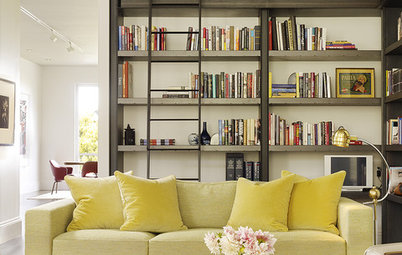
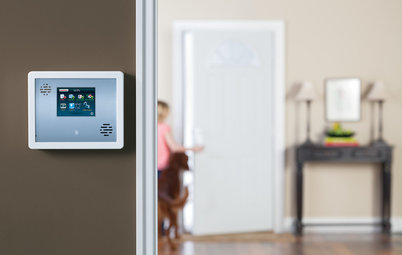
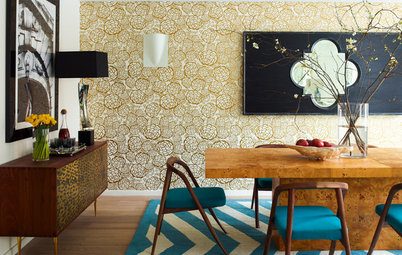
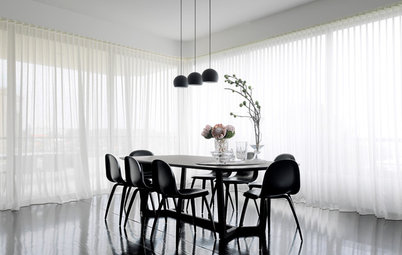
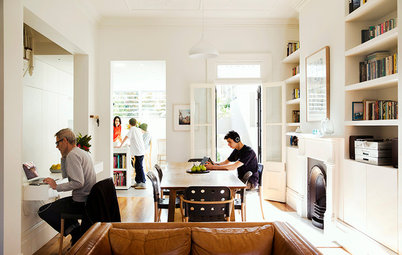
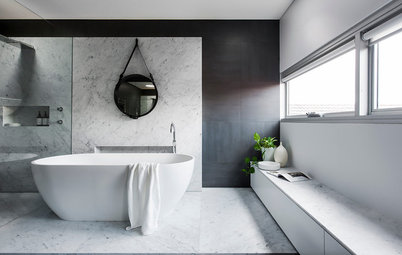
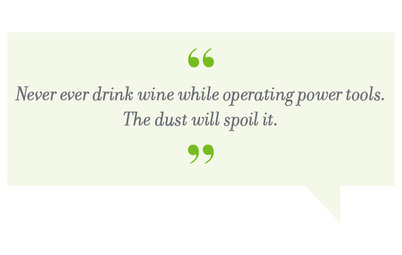
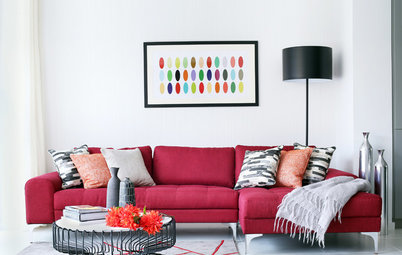

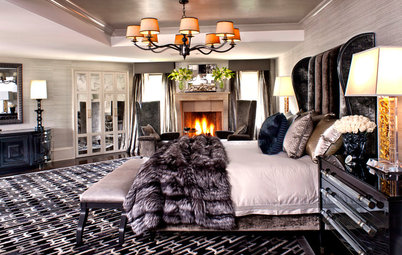
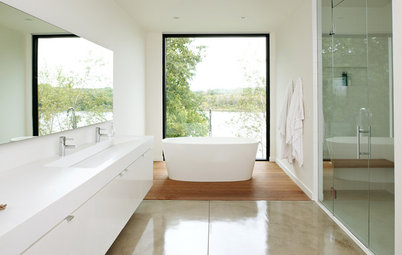
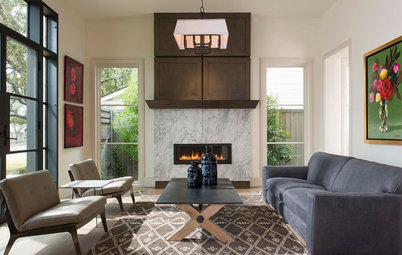
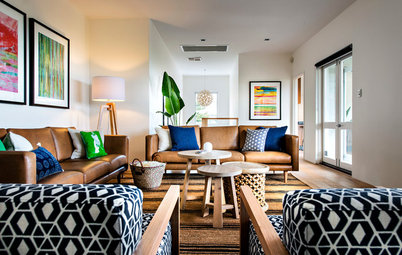
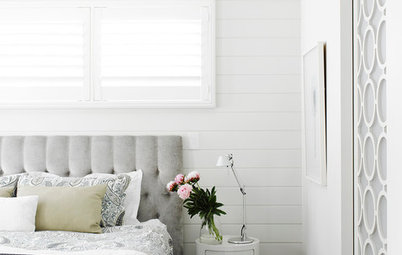
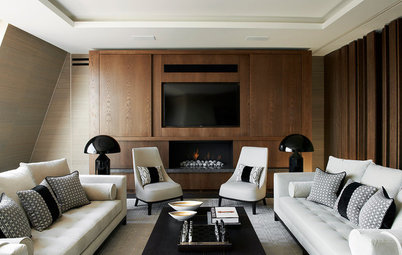

The three most common air conditioner types in Australia are:
1. Wall-hung split systems
A standard split-system air conditioner comprises of two units – an outside unit (the compressor), and an inside air outlet unit (the wall-hung unit). A multi-split system is also possible, in which multiple indoor units (two to six) are connected to a single outdoor unit. According to Andrew Foard, Seasonal Expert for The Good Guys, reverse cycle split-system air conditioners (those that cool and heat) are the most popular air conditioner type on the market because “they’re the cheapest to run, you can use them all year round, and they’re whisper quiet.”
How it works: The two units are connected by pipes that carry refrigerant. The indoor unit blows out cool air, while the outdoor unit dissipates the heat from the cooled area.
Pros: Can cool and heat the desired area; flexible installation options; easiest system to install; and doesn’t require changes to the existing design of your home
Cons: Will only cool/heat small to medium size rooms; and you are limited to only six indoor units (maximum) per outdoor unit
Approximate cost (including installation): $1,000 to $5,000+